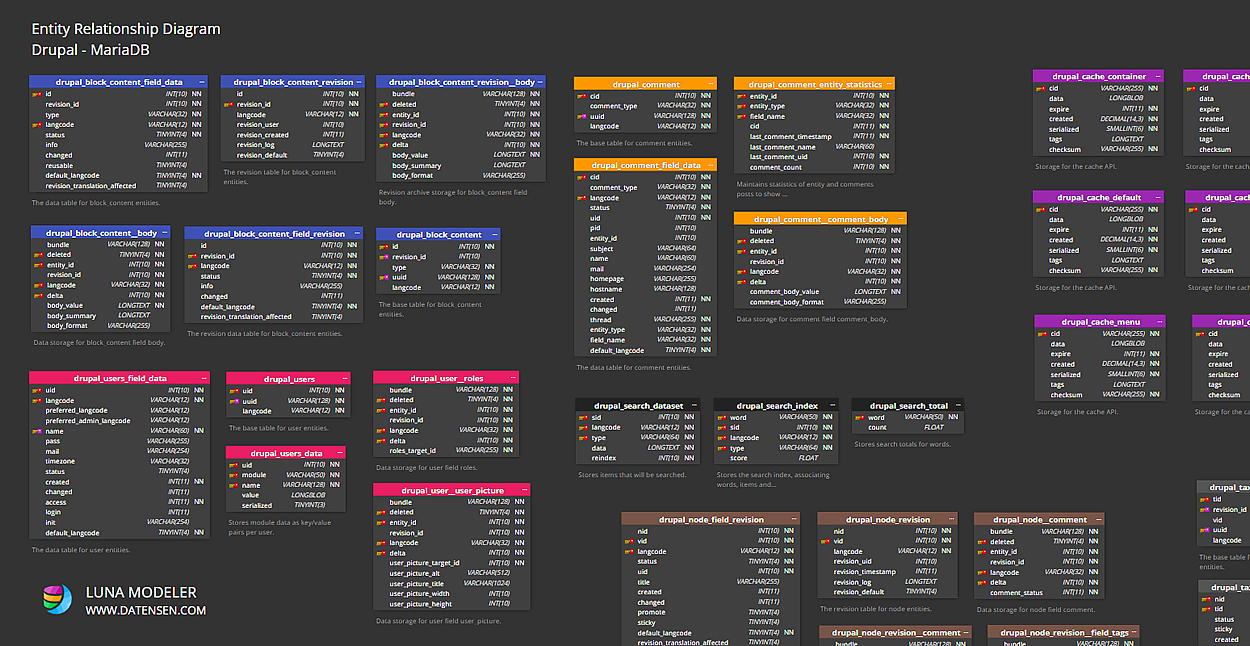
According to the drupal.org site:
“Drupal is content management software. It’s used to make many of the websites and applications you use every day. Drupal has great standard features, like easy content authoring, reliable performance, and excellent security. But what sets it apart is its flexibility; modularity is one of its core principles. Its tools help you build the versatile, structured content that dynamic web experiences need.“
For more information visit https://www.drupal.org
HTML report / online ER diagram
Here you can find a preview of ER diagram created by loading the database structure from installed Drupal version 10.0.9. Target database is MariaDB with InnoDB default engine.
When you click on a database table in the online ER diagram, a new window opens where you can see the details of the table, including defined indexes and other details, as well as well-written descriptions written by the Drupal CMS authors.
This is a nice example of how useful descriptions defined for database tables or table columns are.
Like many other open source systems, database functions, table triggers and other database objects are missing here. The visualization includes database tables, with some of them colored to indicate a group of tables that are focused on a particular area of the database design.
Details
Target database:
MariaDB
Diagram URL:
https://www.dbdiagrams.com/online-diagrams/drupal-10.0.9
Luna Modeler project file:
https://www.dbdiagrams.com/online-diagrams/drupal.dmm
How to open a data model file in Luna Modeler
About Luna Modeler
Luna Modeler is an intuitive data modeling tool for relational databases.
With this powerful tool, you can create ER diagrams, design and visualize database structures, generate SQL scripts, and document your data models with ease. A feature-limited trial version is available for Windows, macOS and Linux.
For more information visit https://www.datensen.com
If you have suggestions or comments, send us a message to dbdiagrams(at)dbdiagrams.com.